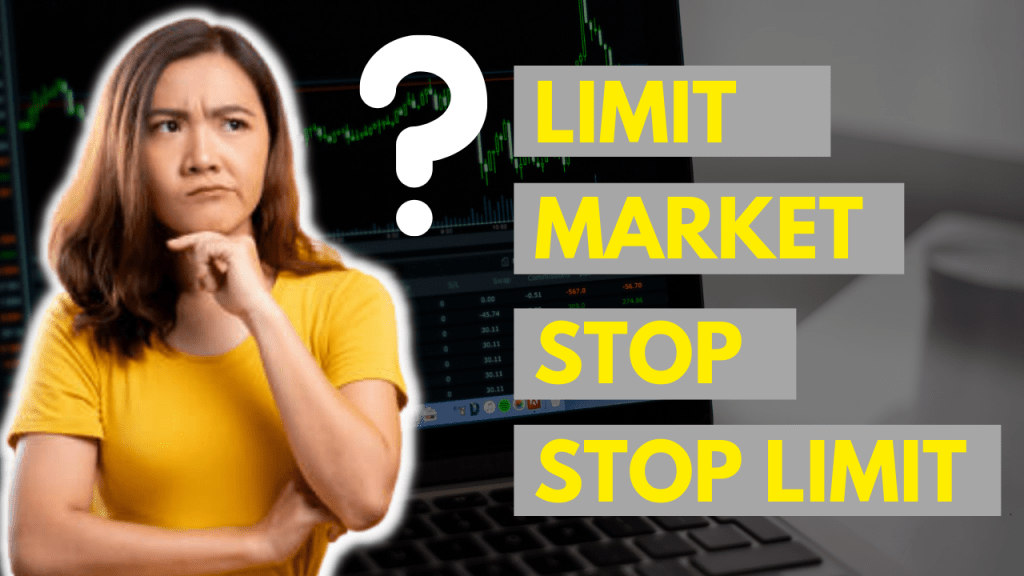
What are the types of orders in the Stock market
In financial markets, traders use orders to get enter and exit from specific trades without being active with the market all day. There are different types of orders. The main order types are limit order, market order, stop order and stop-limit order. Each has its advantages and disadvantages. Let’s briefly study each and everything about these four types of orders in the stock market.
1. What is a limit order?
A limit order is commonly used for entering into a trade. For example, consider if a company A’s share price is 100$. You analyze the charts and come up with the idea that the share price will decrease to 96$ and then it will start to move up. So you are planning to enter into the trade 96$. All you have to do is place a limit order to buy the stock of company A at 96$. Once you place the order when the market reaches 96$ your trade will be executed and you will get a share of company A for 96$.
Likewise, consider if you have a share of company B. B’s share price is 50$. You analyze the charts and come up with the idea that the share price will increase up to 60$ and then it will start to move down after that. So you are planning to exit the trade at 60$. All you have to do is place a limit order to sell the stock of company B at 60$. Once you put the order when the market reaches 60$ your trade will be executed and your share of company B will be sold for 96$.
2. What is a market order?
The market order is commonly used to make quick and immediate trades. Here the trade will place immediately for the least asked price from sellers. For example, consider if a company A’s share price is 100$. You expect the price will go up in long term with investor goals. So if you put a market order to buy the company A’s share, you will get the share of company A for 100$ (Based on sudden volatile movements your trade may be executed at a little lower or higher price but in a normal market you will always end up getting the share for 100$)
Likewise, consider if a company B’s share price is 50$. You assume that the price going to crash and it will take a long time to recover back, and then you have to put a market order to sell. So if you put a market order to sell the company B’s share, you will sell the share of company B for 50$ (Based on sudden volatile movements your trade may execute at a little lower or higher price but in a normal market you will always end up getting the share for 50$)
3. What is a stop order?
Stop order is used to set the least price to exit from a trade. For example, consider if you have a share of company B. B’s share price is 50$. You analyze the charts and come up with the idea that if the share price gets down to 44$ then it will start to move down for a long time after that. So you are planning to exit from the trade in case the price hits 44$. All you have to do is place a stop order to sell the stock of company B at 44$. Once you put the order and the market reaches the 44$ your trade will be executed and your share of company B will be sold for 44$.
4. What is a stop-limit order?
Stop limit order is used to set a specific price to exit from a trade. For example, consider if you have a share of company A. A’s share price is 100$. You analyze the charts and come up with the idea that if the share price gets down to 90$ then it will start to move down for a long time after that. So you are planning to exit from the trade in case the price hits 90$. All you have to do is place a stop-limit order to sell the stock of company A at 90$. Once you place the order and when the market crosses the price line of 90$, then only your trade will be executed and your share of company A will be sold for 90$.
( If you wish to watch a cool video explaining this topic – CLICK HERE )
5. Advantages and Disadvantages of orders

6. Author’s Disclaimer
There are four main types of orders in the stock market. If you are an investment kind of person and you focusing on long term goals, you can use market orders during regular trading hours. You don’t need to worry about high volatility and sudden price falls. But if you are a stock trader you have to be aware of limit orders to protect your trades and the entry-exit points confirmations.
